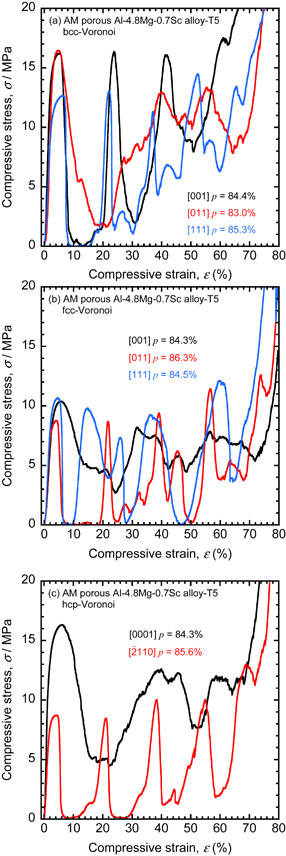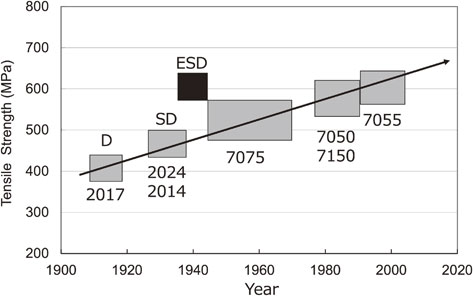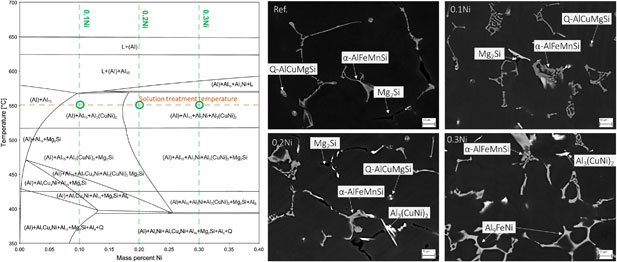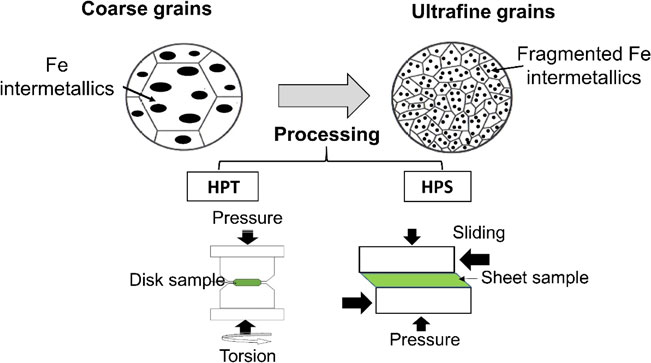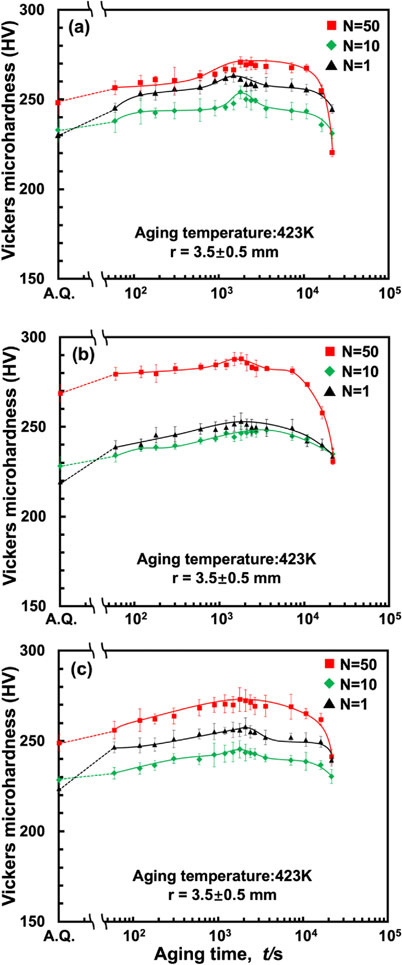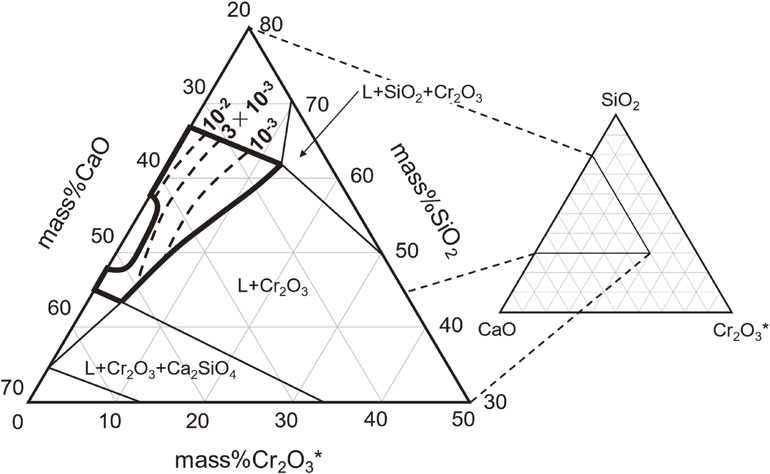Volume 64, Issue 2
Displaying 1-43 of 43 articles from this issue
- |<
- <
- 1
- >
- >|
Overview
-
Article type: Overview
2023Volume 64Issue 2 Pages 307-317
Published: February 01, 2023
Released on J-STAGE: January 25, 2023
Advance online publication: December 05, 2022Download PDF (2618K) Full view HTML
Special Issue on Aluminium and Its Alloys for Zero Carbon Society, ICAA 18
-
Article type: Preface
Subject area: Special Issue on Aluminium and Its Alloys for Zero Carbon Society, ICAA 18
2023Volume 64Issue 2 Pages 318
Published: February 01, 2023
Released on J-STAGE: January 25, 2023
Download PDF (29K) Full view HTML -
Article type: Overview
Subject area: Special Issue on Aluminium and Its Alloys for Zero Carbon Society, ICAA 18
2023Volume 64Issue 2 Pages 319-333
Published: February 01, 2023
Released on J-STAGE: January 25, 2023
Download PDF (7938K) Full view HTML -
Article type: Review
Subject area: Special Issue on Aluminium and Its Alloys for Zero Carbon Society, ICAA 18
2023Volume 64Issue 2 Pages 334-340
Published: February 01, 2023
Released on J-STAGE: January 25, 2023
Download PDF (3521K) Full view HTML -
Article type: Review
Subject area: Special Issue on Aluminium and Its Alloys for Zero Carbon Society, ICAA 18
2023Volume 64Issue 2 Pages 341-351
Published: February 01, 2023
Released on J-STAGE: January 25, 2023
Download PDF (4643K) Full view HTML -
Article type: Regular Article
Subject area: Special Issue on Aluminium and Its Alloys for Zero Carbon Society, ICAA 18
2023Volume 64Issue 2 Pages 352-359
Published: February 01, 2023
Released on J-STAGE: January 25, 2023
Download PDF (2838K) Full view HTML -
Article type: Regular Article
Subject area: Special Issue on Aluminium and Its Alloys for Zero Carbon Society, ICAA 18
2023Volume 64Issue 2 Pages 360-365
Published: February 01, 2023
Released on J-STAGE: January 25, 2023
Download PDF (3024K) Full view HTML -
Article type: Regular Article
Subject area: Special Issue on Aluminium and Its Alloys for Zero Carbon Society, ICAA 18
2023Volume 64Issue 2 Pages 366-372
Published: February 01, 2023
Released on J-STAGE: January 25, 2023
Download PDF (5035K) Full view HTML -
Article type: Regular Article
Subject area: Special Issue on Aluminium and Its Alloys for Zero Carbon Society, ICAA 18
2023Volume 64Issue 2 Pages 373-378
Published: February 01, 2023
Released on J-STAGE: January 25, 2023
Download PDF (3964K) Full view HTML -
Article type: Regular Article
Subject area: Special Issue on Aluminium and Its Alloys for Zero Carbon Society, ICAA 18
2023Volume 64Issue 2 Pages 379-384
Published: February 01, 2023
Released on J-STAGE: January 25, 2023
Download PDF (5031K) Full view HTML -
Article type: Regular Article
Subject area: Special Issue on Aluminium and Its Alloys for Zero Carbon Society, ICAA 18
2023Volume 64Issue 2 Pages 385-391
Published: February 01, 2023
Released on J-STAGE: January 25, 2023
Download PDF (1246K) Full view HTML -
Article type: Regular Article
Subject area: Special Issue on Aluminium and Its Alloys for Zero Carbon Society, ICAA 18
2023Volume 64Issue 2 Pages 392-397
Published: February 01, 2023
Released on J-STAGE: January 25, 2023
Download PDF (1103K) Full view HTML -
Article type: Regular Article
Subject area: Special Issue on Aluminium and Its Alloys for Zero Carbon Society, ICAA 18
2023Volume 64Issue 2 Pages 398-405
Published: February 01, 2023
Released on J-STAGE: January 25, 2023
Download PDF (2857K) Full view HTML -
Article type: Regular Article
Subject area: Special Issue on Aluminium and Its Alloys for Zero Carbon Society, ICAA 18
2023Volume 64Issue 2 Pages 406-413
Published: February 01, 2023
Released on J-STAGE: January 25, 2023
Download PDF (5829K) Full view HTML -
Article type: Regular Article
Subject area: Special Issue on Aluminium and Its Alloys for Zero Carbon Society, ICAA 18
2023Volume 64Issue 2 Pages 414-420
Published: February 01, 2023
Released on J-STAGE: January 25, 2023
Download PDF (3535K) Full view HTML -
Article type: Regular Article
Subject area: Special Issue on Aluminium and Its Alloys for Zero Carbon Society, ICAA 18
2023Volume 64Issue 2 Pages 421-428
Published: February 01, 2023
Released on J-STAGE: January 25, 2023
Download PDF (7888K) Full view HTML -
Article type: Regular Article
Subject area: Special Issue on Aluminium and Its Alloys for Zero Carbon Society, ICAA 18
2023Volume 64Issue 2 Pages 429-435
Published: February 01, 2023
Released on J-STAGE: January 25, 2023
Download PDF (5378K) Full view HTML -
Article type: Regular Article
Subject area: Special Issue on Aluminium and Its Alloys for Zero Carbon Society, ICAA 18
2023Volume 64Issue 2 Pages 436-442
Published: February 01, 2023
Released on J-STAGE: January 25, 2023
Download PDF (4412K) Full view HTML -
Article type: Regular Article
Subject area: Special Issue on Aluminium and Its Alloys for Zero Carbon Society, ICAA 18
2023Volume 64Issue 2 Pages 443-447
Published: February 01, 2023
Released on J-STAGE: January 25, 2023
Download PDF (4203K) Full view HTML -
Article type: Regular Article
Subject area: Special Issue on Aluminium and Its Alloys for Zero Carbon Society, ICAA 18
2023Volume 64Issue 2 Pages 448-457
Published: February 01, 2023
Released on J-STAGE: January 25, 2023
Download PDF (7335K) Full view HTML -
Article type: Regular Article
Subject area: Special Issue on Aluminium and Its Alloys for Zero Carbon Society, ICAA 18
2023Volume 64Issue 2 Pages 458-466
Published: February 01, 2023
Released on J-STAGE: January 25, 2023
Download PDF (4357K) Full view HTML -
Article type: Regular Article
Subject area: Special Issue on Aluminium and Its Alloys for Zero Carbon Society, ICAA 18
2023Volume 64Issue 2 Pages 467-472
Published: February 01, 2023
Released on J-STAGE: January 25, 2023
Download PDF (3220K) Full view HTML -
Article type: Regular Article
Subject area: Special Issue on Aluminium and Its Alloys for Zero Carbon Society, ICAA 18
2023Volume 64Issue 2 Pages 473-478
Published: February 01, 2023
Released on J-STAGE: January 25, 2023
Download PDF (2818K) Full view HTML -
Article type: Regular Article
Subject area: Special Issue on Aluminium and Its Alloys for Zero Carbon Society, ICAA 18
2023Volume 64Issue 2 Pages 479-484
Published: February 01, 2023
Released on J-STAGE: January 25, 2023
Download PDF (1437K) Full view HTML -
Article type: Regular Article
Subject area: Special Issue on Aluminium and Its Alloys for Zero Carbon Society, ICAA 18
2023Volume 64Issue 2 Pages 485-491
Published: February 01, 2023
Released on J-STAGE: January 25, 2023
Download PDF (6180K) Full view HTML -
Article type: Regular Article
Subject area: Special Issue on Aluminium and Its Alloys for Zero Carbon Society, ICAA 18
2023Volume 64Issue 2 Pages 492-499
Published: February 01, 2023
Released on J-STAGE: January 25, 2023
Download PDF (7100K) Full view HTML -
Article type: Regular Article
Subject area: Special Issue on Aluminium and Its Alloys for Zero Carbon Society, ICAA 18
2023Volume 64Issue 2 Pages 500-505
Published: February 01, 2023
Released on J-STAGE: January 25, 2023
Download PDF (4215K) Full view HTML -
Article type: Regular Article
Subject area: Special Issue on Aluminium and Its Alloys for Zero Carbon Society, ICAA 18
2023Volume 64Issue 2 Pages 506-513
Published: February 01, 2023
Released on J-STAGE: January 25, 2023
Download PDF (3601K) Full view HTML -
Article type: Regular Article
Subject area: Special Issue on Aluminium and Its Alloys for Zero Carbon Society, ICAA 18
2023Volume 64Issue 2 Pages 514-521
Published: February 01, 2023
Released on J-STAGE: January 25, 2023
Download PDF (4361K) Full view HTML
Regular Article
Materials Physics
-
Article type: Regular Article
2023Volume 64Issue 2 Pages 522-526
Published: February 01, 2023
Released on J-STAGE: January 25, 2023
Download PDF (1027K) Full view HTML
Microstructure of Materials
-
Article type: Regular Article
2023Volume 64Issue 2 Pages 527-534
Published: February 01, 2023
Released on J-STAGE: January 25, 2023
Advance online publication: January 10, 2023Download PDF (4415K) Full view HTML -
Article type: Regular Article
2023Volume 64Issue 2 Pages 535-539
Published: February 01, 2023
Released on J-STAGE: January 25, 2023
Advance online publication: January 10, 2023Download PDF (3358K) Full view HTML
Mechanics of Materials
-
Article type: Regular Article
2023Volume 64Issue 2 Pages 540-547
Published: February 01, 2023
Released on J-STAGE: January 25, 2023
Advance online publication: December 16, 2022Download PDF (3352K) Full view HTML -
Article type: Regular Article
2023Volume 64Issue 2 Pages 548-554
Published: February 01, 2023
Released on J-STAGE: January 25, 2023
Advance online publication: December 23, 2022Download PDF (4327K) Full view HTML
Materials Chemistry
-
Article type: Regular Article
2023Volume 64Issue 2 Pages 555-563
Published: February 01, 2023
Released on J-STAGE: January 25, 2023
Advance online publication: December 16, 2022Download PDF (3887K) Full view HTML -
Article type: Regular Article
2023Volume 64Issue 2 Pages 564-567
Published: February 01, 2023
Released on J-STAGE: January 25, 2023
Download PDF (1842K) Full view HTML -
 Article type: Regular Article
Article type: Regular Article
2023Volume 64Issue 2 Pages 568-577
Published: February 01, 2023
Released on J-STAGE: January 25, 2023
Advance online publication: December 23, 2022 -
Article type: Regular Article
2023Volume 64Issue 2 Pages 578-585
Published: February 01, 2023
Released on J-STAGE: January 25, 2023
Download PDF (3554K) Full view HTML
Materials Processing
-
Article type: Regular Article
2023Volume 64Issue 2 Pages 586-595
Published: February 01, 2023
Released on J-STAGE: January 25, 2023
Download PDF (2236K) Full view HTML -
Article type: Regular Article
2023Volume 64Issue 2 Pages 596-603
Published: February 01, 2023
Released on J-STAGE: January 25, 2023
Advance online publication: December 16, 2022Download PDF (3683K) Full view HTML -
Article type: Regular Article
2023Volume 64Issue 2 Pages 604-612
Published: February 01, 2023
Released on J-STAGE: January 25, 2023
Download PDF (5876K) Full view HTML
Engineering Materials and Their Applications
-
Article type: Regular Article
2023Volume 64Issue 2 Pages 613-616
Published: February 01, 2023
Released on J-STAGE: January 25, 2023
Advance online publication: December 16, 2022Download PDF (4644K) Full view HTML -
Article type: Regular Article
2023Volume 64Issue 2 Pages 617-625
Published: February 01, 2023
Released on J-STAGE: January 25, 2023
Download PDF (5845K) Full view HTML
- |<
- <
- 1
- >
- >|



